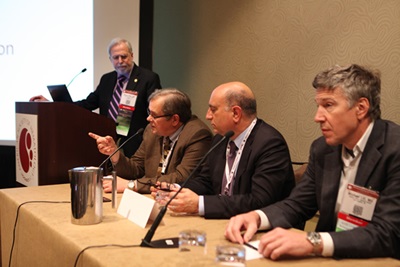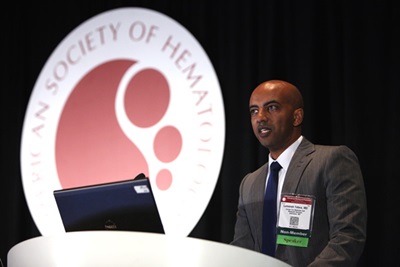ASH 2015 Highlights New Payment Models and Performance Measurement
Two Sessions at ASH 2015 Highlight the Difficulty of Measuring and Paying for Value
The 2015 ASH Quality Symposium and the 2015 ASH Practice Partnership lunch addressed two sides of the issue of how hematologists can demonstrate their value and get paid for providing it. Hematologists are clearly very interested in these topics based on the large attendance at both events. At the ASH 2015 Quality Symposium, the concept of performance measurement was explored in depth by Helen Burstin, MD of the National Quality Forum, Andrew Ryan of the University of Michigan, and Lemenah Tefera, MD of the Centers for Medicare and Medicaid Services. Dr. Burstin and Dr. Ryan explored the existing measures of relevance to hematology and the evidence underlying the science of performance improvement. Both noted the importance of moving from clinical process measures to outcome measures but both said that this transition was made much more difficult by issues of risk adjustment and accountability. Dr. Tefera then explained in great depth the upcoming Merit-Based Incentive Payment System (MIPS) program that will adjust Medicare payment to physicians by as much as nine percent in the future. During the question and answer period, hematologists in the audience asked questions about the risk adjustment associated with quality measures and how to integrate new evidence into this performance measurement.
At the ASH Practice Partnership lunch, three different speakers described the issue of new payment models and how hematologists might be held responsible for resource use. Michael Lill, MD explored the bundled payment structure associated with bone marrow transplants, Joseph Alvarnas, MD looked at how we might be able to identify resource use variation in cases of acute leukemia, and the oncology medical director of Aetna, Michael Kolodzej, MD, explained the perspective of an insurer when looking at resource use and new payment models. Dr. Lill told attendees that much of the risk of transplant has been pushed to providers to give them incentives to provide care in the most efficient way possible. Because very difficult patients could spend months in the hospital, most insurers provide outlier clauses so that hospitals are not liable for those who have expenses beyond a certain very high threshold, which helps to cap the risk for hospitals and encourage care for those who might require more resources. Dr. Alvarnas contrasted the issue of diabetes with the issue of leukemia, noting that there are many more diabetics than those with acute leukemia and that acute complications of that disease can be addressed in part by strong management. He then spoke about the many things we are just beginning to learn about the impact of genetics on the progression of leukemia. Dr. Kolodzej spoke about the role of pathways in cancer care and indicated that pathways were just a start for a more systems-based cancer care. Each of the speakers offered brief personal reflections on the upcoming Medicare Oncology Care Model.
These sessions emphasized the increasing burden on hematologists to demonstrate high quality outcomes while reducing the costs of care. As Medicare and other payers increasingly move to models of care that emphasize outcomes, hematologists will need to be aware of how their performance is assessed and how they can design models that allow them to succeed while providing the best care for their patients.
 |
 |


